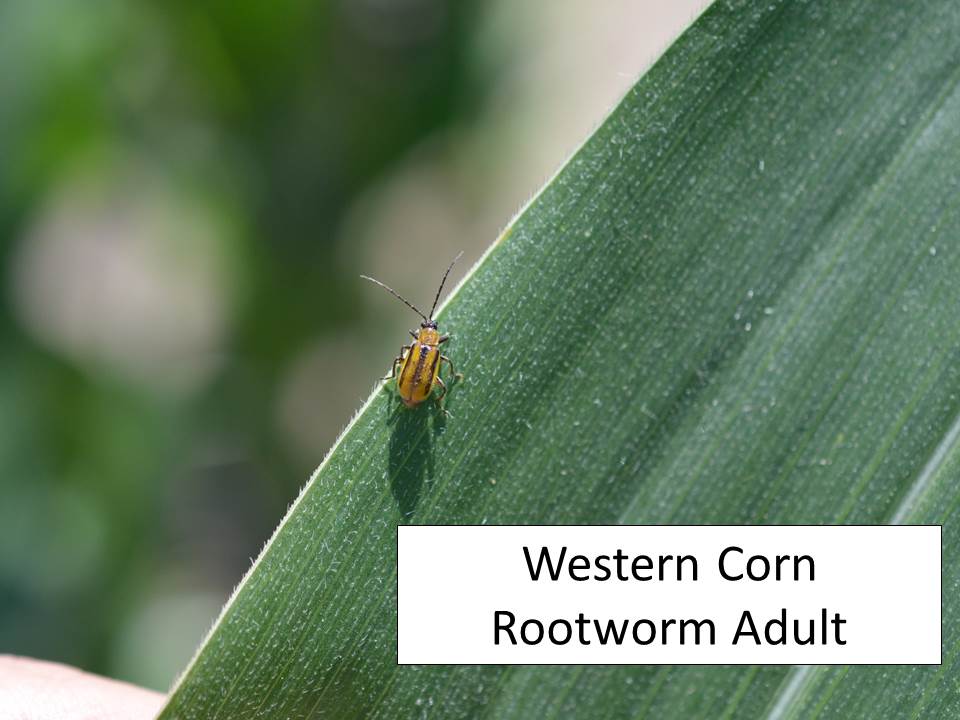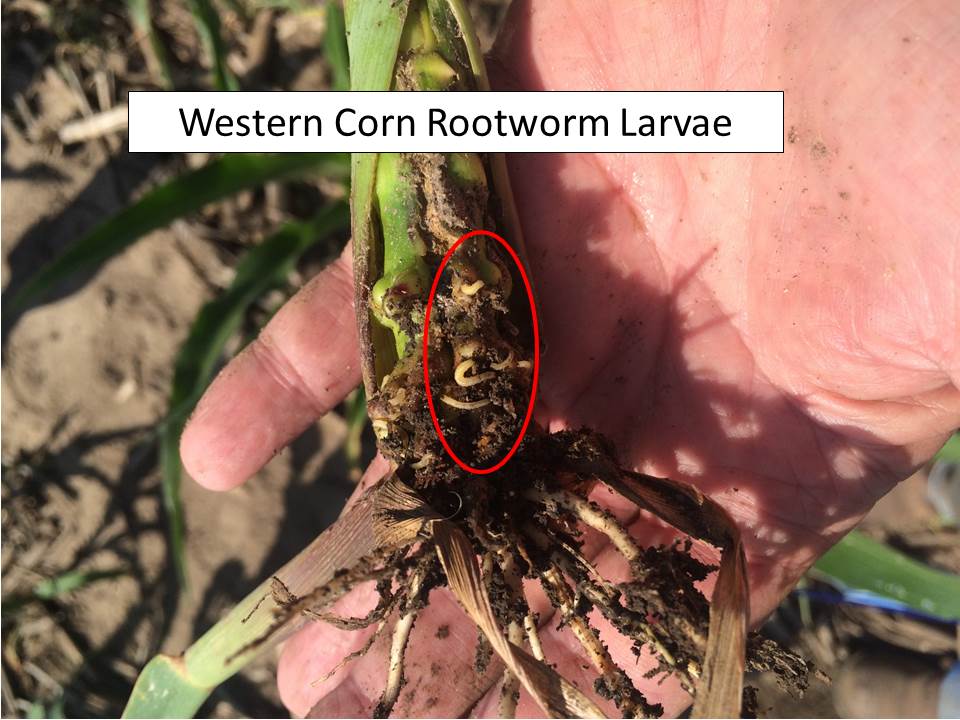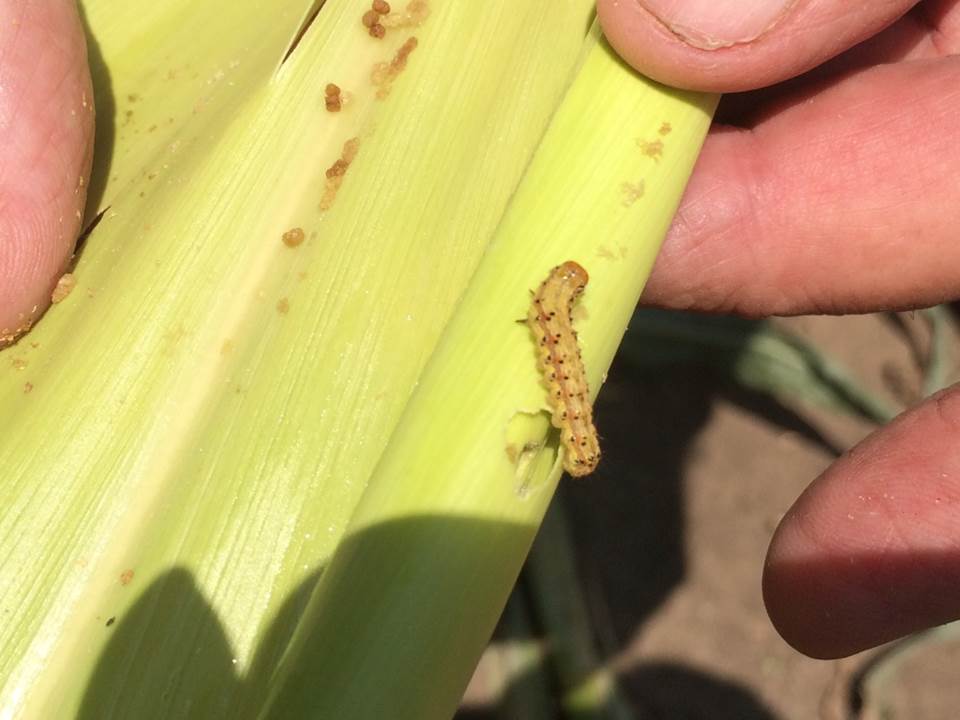–by Dr. Jeff Whitworth and Dr. Holly Schwarting
Double cropped sorghum may still have some ragworm feeding during the whorl stage (see photo). In addition, there will probably be at least one more generation of headworms and thus later planted sorghum needs to be monitored for headworms between flowering and soft dough when it is vulnerable. Also, continue monitoring for aphids as there still seems to be a pretty good mixture of greenbugs, corn leaf, yellow sugarcane, and sugarcane aphids. Some of the fields treated for headworms have reduced numbers of beneficials so they may not be there in sufficient numbers to help control these aphids. However, some of the fields sampled this week that were sprayed for headworms at least 2 weeks ago had pretty good populations of beneficials already building back up.







